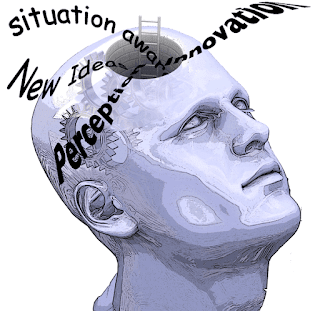Freezing with Fear
Turning Hopelessness into Action.
Have you ever seen one of those amazing animals in the wild documentaries in which a lion or cheetah is stalking its prey, say a gazelle or some other kind of antelope? All of a sudden, the gazelle seems to sense that a deadly predator is near and freezes in place. When the camera zooms in on the poor prey, we can see that its ears and nostrils are twitching and its eyes darting back and forth, but no other movement is apparent. Adaptively, the animal is using its advanced senses to detect where the lion is, rather than running around and risk going right into the hunter. In this case, freezing is an adaptive response to a real threat in the animal’s immediate environment.
Perhaps you have frozen in the face of danger yourself. Have you ever been driving along in your car when suddenly you realized that another car had gone through a red light and was coming right at you? Moments later you hear the crash and feel the impact. Later, you berate yourself: why didn’t I swerve to avoid the ongoing car, or brake harder to stop before it crossed my path? The reason is that you were frozen with fear, perhaps not an adaptive response in this case but certainly an evolutionarily conserved one.
Neuroscientists have learned a great deal about freezing with fear by studying rodents undergoing classical or Pavlovian fear conditioning. When a rat in a conditioning chamber is exposed to a sudden, loud tone it will look up to see where the noise is coming from, but not exhibit much in the way of fear. But if the tone is terminated by a mild electric shock, the animal freezes in place for several seconds. After this initial training, if the tone is presented without a shock, the rat still freezes. The animal has become conditioned to fear a previously innocuous stimulus, now called the conditioned stimulus or CS.
Scientists like NYU’s Joseph LeDoux and Emory’s Michael Davis showed that fear conditioning to an auditory stimulus like this follows a pathway that goes from the rat’s ears to the auditory thalamus to a structure deep in the limbic cortex called the amygdala. The neural impulse first enters a subregion of the amygdala called the lateral nucleus, is next transferred to another subregion called the central nucleus, and is then distributed to several other brain regions. One of these is called the periaqueductal gray (PAG) region, and it is here that the freezing response is initiated. A lesion in the pathway between the amygdala and the PAG region pprevent freezen from occurring in a fear conditioned rat when the tone is sounded. Brain imaging studies have shown that conditioned fear activates the amygdala in humans as well.
Severe anxiety and fear, then, naturally causes mammals like we humans to freeze. While that may be the best response in some cases, it can be dangerous in others. An example may be our response to climate change. Our response to the dire warnings that we are rapidly destroying our planet by burning fossil fuels and eating red meat could be terror to the point that we are frozen with fear, unable to take the steps to save ourselves.
It has been noted many times that scare tactics sometimes work and sometimes don’t. In the case of climate change, we of course want people to be worried. Scientists agree that the earth is warming at an alarming rate that, if unchecked, will lead to a myriad of disasters and make some regions of the globe uninhabitable. Human activity, mostly in the form of burning fossil fuels for energy, is clearly to blame. Only concerted and radical activity on the part of individuals, governments, and societies can save us.
None of this is even slightly hyperbolic; indeed, one could easily use more frightening language about climate change and still be accurate. The question is whether scaring people about this grim and impending reality will indeed motivate them to change their attitudes and behaviors. There is good reason to worry that scaring people about the terrors of climate change--massive flooding, out of control wildfires, unbreathable air, and stifling heat waves—is counterproductive and may actually lead to people becoming apathetic and not taking any kind of action at all. The predictions are so dire that we feel hopeless and helpless to intervene. Instead, we freeze with fear, just like the rats do when they see no way out of the fear condition. But perhaps especially kn the case of climate change, that inaction spells doom.
But laboratory science shows us there is a potential solution. Recall the laboratory rat who has been trained to freeze every time it hears a tone once paired with a shock. If that same rat is shown a door that allows it to escape the conditioning chamber when it hears the tone, the neural impulse from the amygdala is routed away from the PAG, where freezing is initiated, and directed instead to a different brain region, the ventral striatum, a structure involved in motivated action. Joe LeDoux and I wrote about this phenomenon, which has been shown to be equally true in humans, as an example of how psychotherapy might help people who suffer from anxiety disorders. Taking an action, we argued in 2001 shortly after the World Trade Center disaster, redirects the fear pathway away from freezing and toward meaningful coping.
This same reasoning might be applied to our attempts to prevent climate change anxiety from causing inertia and instead translate it into action. We should give people environmentally positive tasks that they find achievable and meaningful and then relate them to the larger climate change picture. For example, many communities now mandate recycling of household garbage, but few report back to citizens how they are doing. Instead, penalties are imposed for non-compliance. We know that positive reinforcement is often more powerful than punishment--at least with respect to pre-adolescent children--so why not let people know how many tons of garbage they have recycled and how much carbon dioxide-releasing energy they have saved because of their recycling efforts? Further, perhaps we could give this information not only on an individual basis but on a community level as well, so that people could understand how they and their neighbors are together combatting global warming.
Let’s make people feel successful rather than hopeless in the face of climate change. We have the neurobiological basis for understanding how this can dramatically affect our brain’s response to a challenge. It is time to use that information in order to unfreeze us and turn our fears into motivated action to save our planet.
By Olonade Olawale (Brain Feels)




















